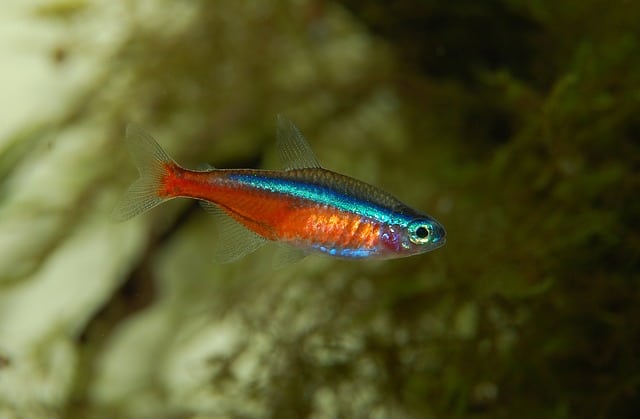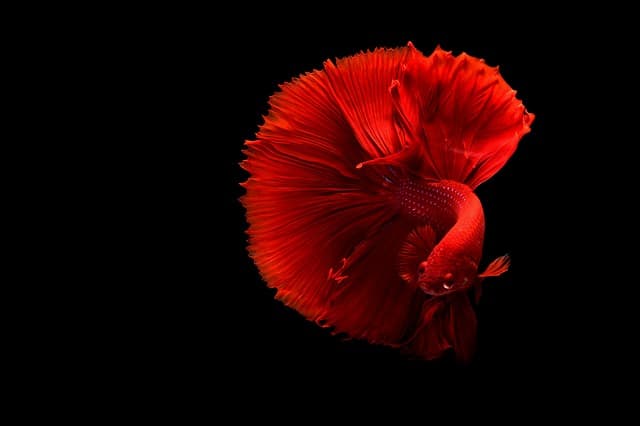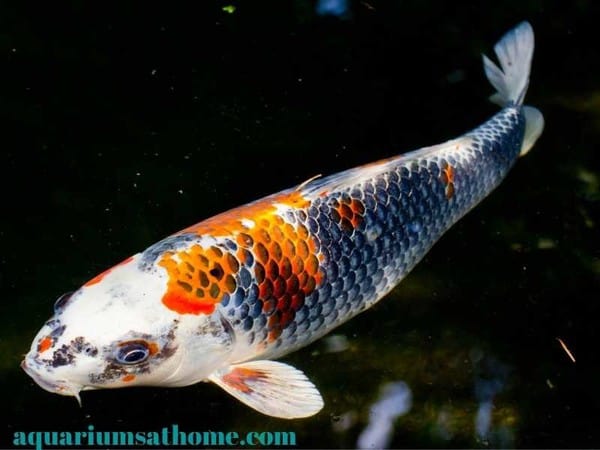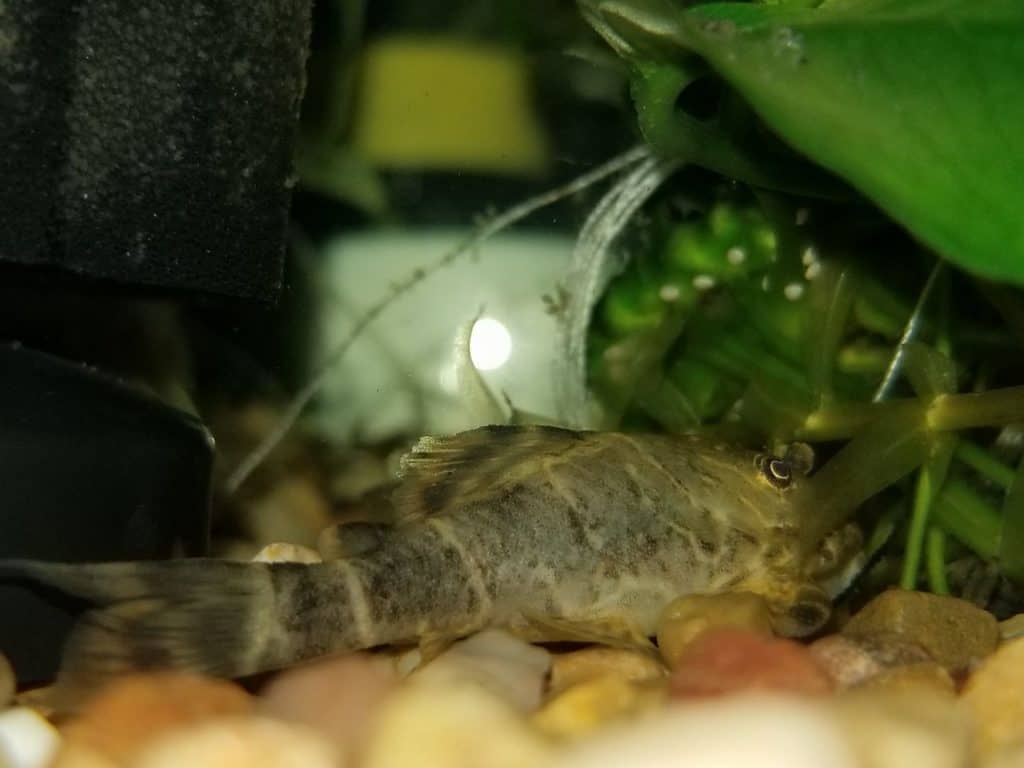If you have started out in the aquarium hobby with a freshwater tank, you may now like to try your hand at a saltwater tank. As you gain experience, the thought of having a saltwater aquarium becomes more and more appealing. But can a freshwater tank be converted to saltwater and which freshwater fish can survive in marine conditions? Well, I have the answer below:
A freshwater tank can indeed be converted to a saltwater version. The most popular freshwater fish that can be converted to saltwater are guppies and mollies. As well, some species of catfish can also live in saltwater aquariums. Any fish found in brackish water including gobies, puffers, monos, and scats can also be adapt to saltwater conditions.
Now that you know you can convert some fish from freshwater to saltwater, let’s take a closer look at this further and in more detail. I’ll explain which freshwater fish species can survive in a marine environment as well as how long they can do so. I’ll also discuss how this is possible and outline the best way to convert your tank.
So, if you’re ready to learn more about changing a freshwater to a saltwater tank and which fish can survive the conversion, then let’s get started!
What Freshwater Fish Can Acclimate to Saltwater?
Any fish that can live in brackish water can survive in marine conditions. Brackish water is that which has more salinity than freshwater but not as much as seawater. If usually results when freshwater and seawater mix, such in the case of estuaries or aquifers. The water appears quite dark in color with a salt concentration greater than 30 per cent.
Fish that are commonly found in brackish water include catfish, gobies, puffers, monos, and scats. These fish can live in both freshwater and saltwater aquariums. Guppies and mollies can also live in a brackish tank. Saltwater fish, on the hand, cannot live in a freshwater environment so if you intend to convert your existing tank, make sure it’s from fresh to salt, not vice versa.
How Long Can a Freshwater Fish Live in Saltwater?
Freshwater fish that like brackish water can live for quite a while in a saltwater tank, provided they’re healthy and you maintain the tank properly. Tropical freshwater fish won’t live for long in a saltwater tank. in fact, after only a few minutes of exposure to saltwater, most freshwater fish will die. Therefore, if you intend to convert your tank, be sure the fish you have can survive the changeover.
Only a few species of freshwater fish can live in both brackish and freshwater conditions. Some species like bettas, for example, prefer brackish water but can also live in freshwater, provided it is extremely hard. Anadromous fish like salmon or trout are born in freshwater but spend most of their lives in saltwater that has a maximum salinity of 50 per cent compared to brackish water which is 30 per cent.
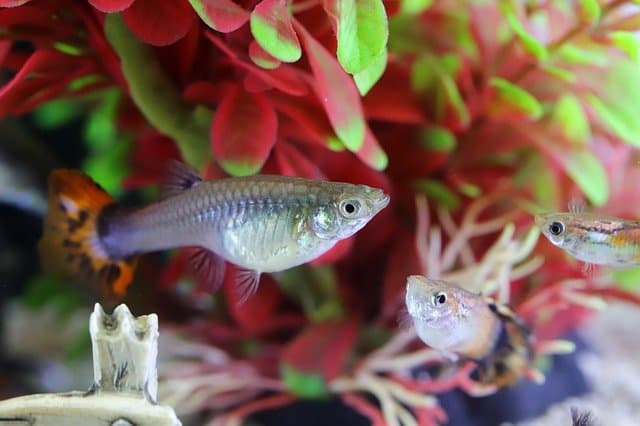
What Happens if You Put a Freshwater Fish in Saltwater?
If you put most freshwater fish into saltwater, the water inside their bodies will expel due to the high saline concentration. This will cause the fish to die of dehydration in mere minutes. Tropical freshwater fish can be very sensitive to changes in water conditions – even the slightest fluctuation in salinity can result in illness and/or death. Only fish found in brackish water can be converted.
Putting saltwater fish into a freshwater tank would ultimately have the same dire consequences. The bodies of saltwater fish require a high level of salinity. If put into freshwater, their cells would begin to accumulate so much liquid that they would bloat and eventually die. Therefore, you can NEVER convert saltwater fish into a freshwater environment.
Which Freshwater Fish Can Live Together in a Saltwater Environment?
As mentioned above, the freshwater fish with the best survival rate when it comes to converting a freshwater tank to a saltwater aquarium are catfish, gobies, guppies, puffers, mollies, monos, and scats. But can these fish all live together harmoniously in a community tank environment? Well, let’s explore this topic further below…
Gobies and guppies make excellent tank mates. Both can also be kept with mollies, monos, and scats. On the other hand, if you have puffers, you shouldn’t keep them with gobies or guppies. Puffer fish are aggressive, territorial, and (most importantly) carnivorous! They’ll likely eat the other smaller fish in the tank if given the opportunity.
As far as smaller catfish are concerned, their ideal tank mates are peaceful and include gobies, guppies and mollies. Larger catfish do well with monos as they too prefer the company of other big, robust fish like themselves. Don’t keep large catfish with miniature puffers as catfish are predatory in nature. As well, guppies shouldn’t be kept with puffers either since they’re more likely to get their fins nipped!
How do You Make Freshwater Brackish?
If you’re ready for a change from a freshwater aquarium, staring a brackish tank is the way to go. This way, you can try your luck at a marine set-up without committing to a full-on saltwater tank, which is much more demanding in terms of maintenance. A brackish tank is easier for most freshwater fish to adapt to, provided you have the right equipment and offer the proper care.
To set-up a brackish tank, begin by mixing marine salt with water in a bucket – use 10 grams of salt per litre of water. The pH level in the bucket should be between 7.5 and 8.5 with a temperature of 23 to 29 degrees Celsius. Remove 20 percent of the water from the aquarium and add the bucket mixture to the tank. Do this after the mixture has sat for at least 20 minutes and all the salt has dissolved.
NEVER add salt directly to the tank as this can seriously harm both the fish and the plants in the tank. Make sure to continuously measure the specific gravity using your hydrometer – it should be between 1.005 and 1.020. And, if you haven’t already done so, install a heater on your tank. This is necessary to keep the warm brackish water conditions between 23 and 29 degrees Celsius.
After a week, the nitrogen cycle should be complete. Then, it’s time to add the fish. Do this slowly so as not to shock them. Gravel, pebble, or stone can be used for substrate and be sure to include driftwood or tree root ornaments to help mimic the typical brackish water conditions. This will make your fish feel more ‘at home’ in their new environment.
How do You Convert a Tank from Freshwater to Saltwater?
To convert an aquarium from freshwater to saltwater, you must do the following:
- Remove all fish and keep only those that can live in a saltwater tank – if none of them will, then either give them away or sell them.
- Drain and clean the tank – remove all decorations, plants, and gravel and scrub down the walls of the aquarium.
- Change out the lighting so it is suitable for a saltwater tank.
- Add base sand instead of gravel for substrate – be sure to rinse the sand well first.
- Upgrade the filtration system to better suit a marine tank environment.
- Add filtered water to the tank followed by a marine salt-and-water mixture until you’ve reached to appropriate salinity and specific gravity for the fish you intend to keep.
- Add live rock – check the biological balance regularly to ensure it stabilizes properly for the fish and corals you want to have.
- Add fish, corals, and live plants suitable to the water, heat, and light conditions you’ve created.
Conclusion
To conclude, a freshwater tank can be converted to a saltwater version, provided the fish you have can sustain the changeover. The best freshwater fish for this type of conversion include catfish, gobies, guppies, mollies, monos, puffers, and scats. Basically, any fish found in brackish water can likely adapt to saltwater conditions.
Hopefully, this article has been of help to you. Thanks for reading and good luck with your freshwater to saltwater tank conversion!
Related Posts
How to Convert a Saltwater Tank to Freshwater (Is it Really Possible)?
Which is Better a Freshwater or Saltwater Aquarium?
How to Make a Freshwater Tank Look Like a Saltwater Tank



